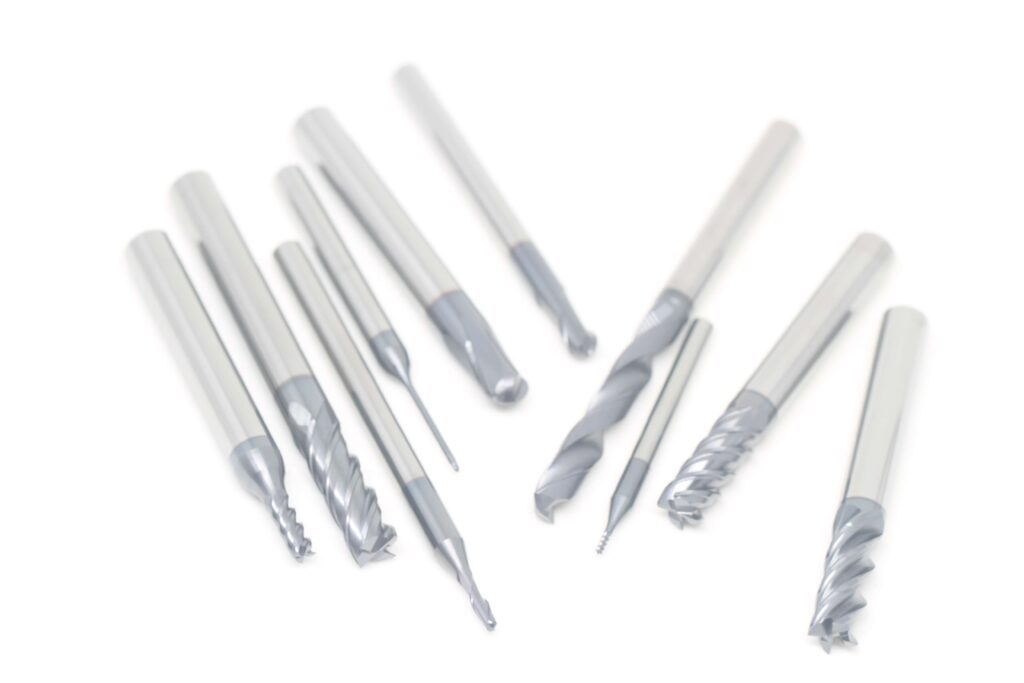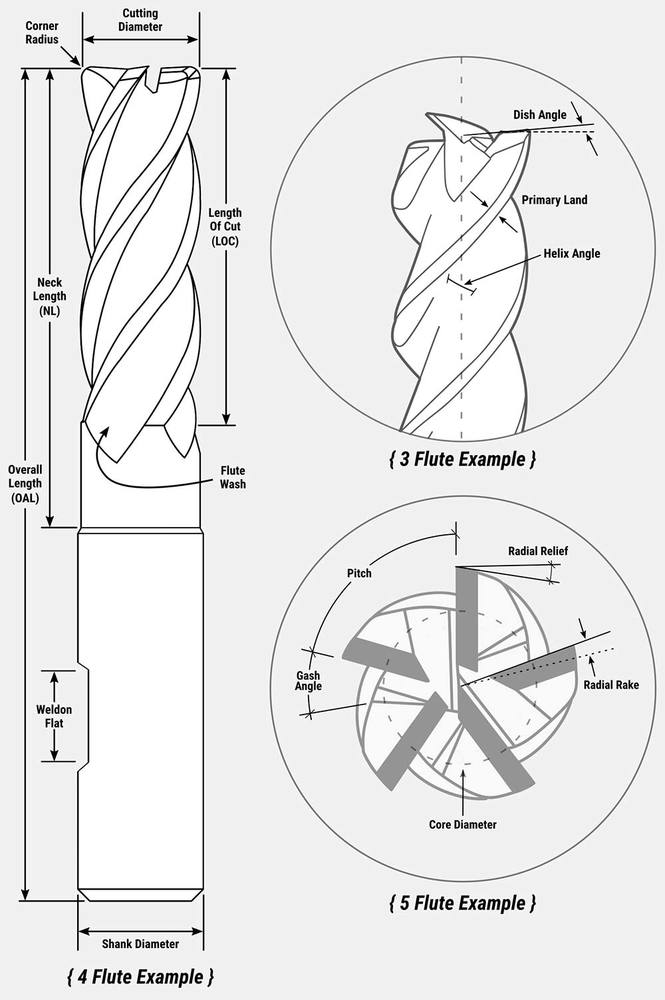
Understanding Endmills: The Basics
What is an Endmill?
Endmills are crucial cutting tools in the machining industry, serving as the backbone of modern CNC machining operations. As discussed in our article about Introduction to Solid Carbide Cutting Tools – Benefits and Applications, these versatile tools are essential for creating precise cuts and shapes in various materials.

How Do Endmills Work?
Endmills function through a combination of rotation and lateral movement, creating precise cuts in materials. Unlike drill bits that only cut axially, endmills can cut in all directions, making them incredibly versatile for various machining operations.
Classification of Endmills
Based on Construction Material
Endmills are manufactured using different materials, each suited for specific applications:
- High-Speed Steel (HSS)
- Solid Carbide
- Carbide-Tipped
- Cobalt-Enhanced HSS
Based on Number of Flutes
The number of flutes significantly impacts an endmill’s performance:
- 2-flute endmills: Ideal for aluminum and soft materials
- 3-flute endmills: Balanced performance for various materials
- 4-flute endmills: Perfect for steel and harder materials
- Multi-flute endmills: Specialized applications

Based on End Geometry
Different end geometries serve various cutting needs:
- Flat bottom
- Spherical bottom
- Corner radius
- Tapered
Common Types of Endmills
Square End Mills
Square end mills, also known as flat end mills, are the most common type. They feature a flat cutting end perpendicular to the tool axis, making them perfect for:
- Creating straight walls
- Slot cutting
- Shoulder milling
- Surface planning
Ball End Mills
Ball end mills feature a hemispherical cutting tip, ideal for:
- 3D contour machining
- Complex surface finishing
- Die and mold making
- Curved surface creation
Corner Radius End Mills
These tools combine features of square and ball end mills:
- Enhanced tool strength
- Better surface finish
- Reduced tool wear
- Improved material removal rates
Tapered End Mills
Tapered end mills have a gradually reducing diameter:
- Perfect for draft angles
- Ideal for mold making
- Enhanced reach in deep cavities
- Better surface finish in angular cuts
Specialized Endmill Types
Roughing End Mills
These are designed for rapid material removal:
- Serrated edges
- Deep flutes
- Enhanced chip evacuation
- Higher material removal rates
Threading End Mills
Specifically designed for thread milling:
- Single-point threading
- Multi-point threading
- Internal and external threading capabilities

Choosing the Right Endmill
Selection criteria include:
- Material being cut
- Desired surface finish
- Machine capabilities
- Production requirements
- Cost considerations
Maintenance and Care
Proper maintenance ensures optimal performance:
- Regular cleaning
- Proper storage
- Wear monitoring
- Timely replacement
Conclusion
Understanding different types of endmills and their specific applications is crucial for successful machining operations. By choosing the right tool for each job, manufacturers can optimize their processes, improve quality, and reduce costs.
Frequently Asked Questions
- What’s the difference between a 2-flute and 4-flute endmill?
- 2-flute endmills provide better chip evacuation and are ideal for softer materials, while 4-flute endmills offer better surface finish and are better suited for harder materials.
- Can I use the same endmill for different materials?
- While possible, it’s not recommended as different materials require specific cutting geometries and coatings for optimal performance.
- How long does an endmill typically last?
- Lifespan varies greatly depending on usage, material being cut, cutting parameters, and tool quality. Regular monitoring helps determine replacement timing.
- What causes endmill failure?
- Common causes include excessive speed/feed rates, improper chip evacuation, wrong tool selection, and inadequate cooling.
- Are carbide endmills worth the extra cost?
- Yes, carbide endmills generally offer better performance, longer life, and ability to machine harder materials, making them cost-effective in the long run.
